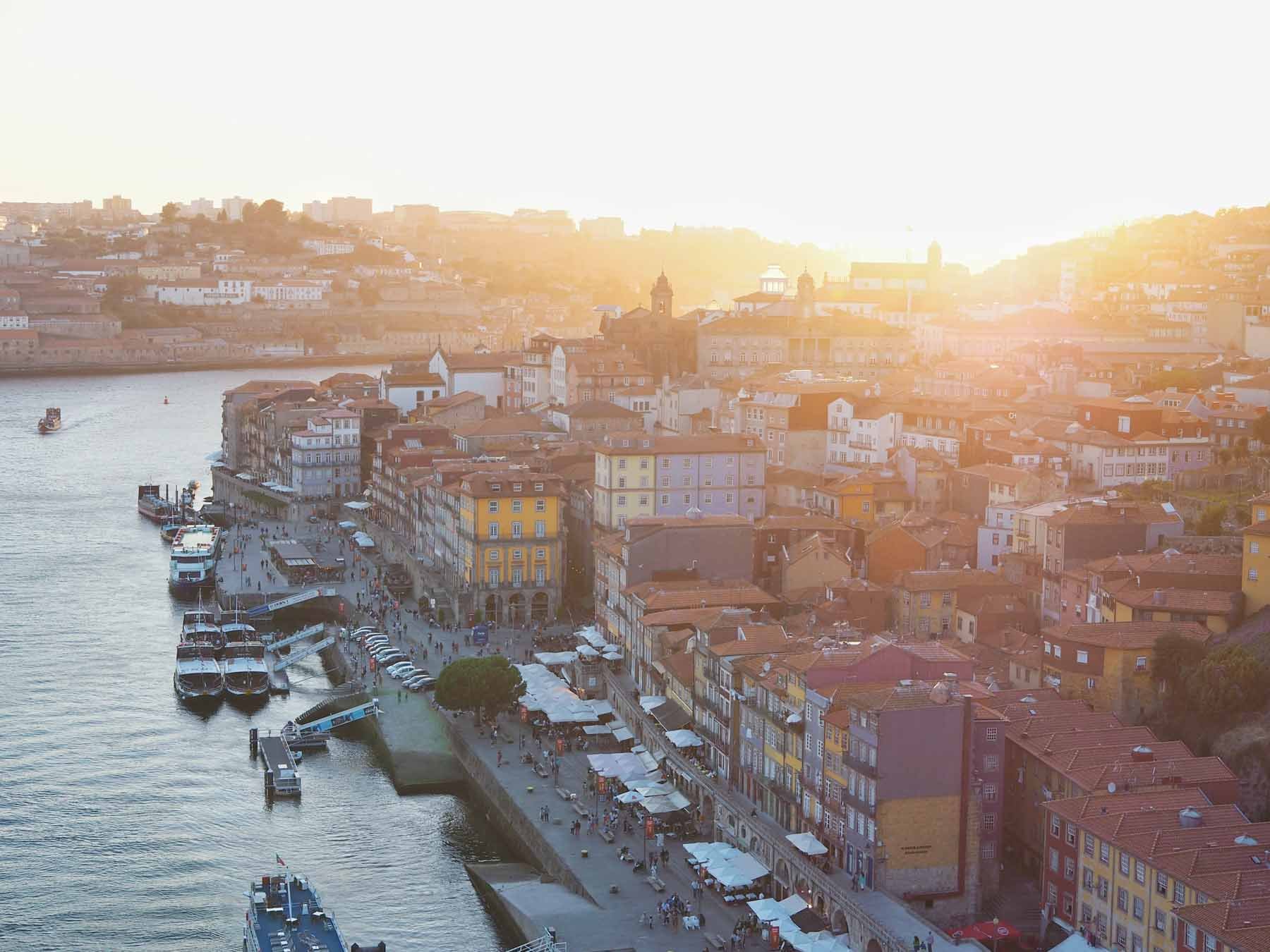Gateway to the sea
Sunset over Porto // photo Seongyong Im/Unsplash
by Jade French
Porto has built a reputation as one of Europe’s most visited tourist destinations for at least five years running. Situated along the Douro River estuary in Portugal, it is a gateway to the sea that moves from the built-up Ribeira district to a matrix of beaches stretching through neighbouring towns Foz and Matosinhos. Unsurprisingly, this prime location means Porto and its neighbours are a haven when it comes to seafood, with traditional and contemporary takes sitting side by side.
Traditionally, Portuguese fishmongers have been women—a fact celebrated by this statue in Póvoa de Varzim. In the Mercado Municipal de Matosinhos women still make up the majority of vendors selling the catches of the day. Here, you can haggle for the freshest wares under a bright Art Deco dome. With all the fresh produce at their fingertips, restaurants such as Mafalda’s (with their innovative twists on salmon cured in gin and beetroot), and Mercado (who grill your freshly bought fish in front of you) have set up shop in this historic market.
On the Rua Herois de Franca, you’ll find street vendors grilling fish in the open air. No one slow-cooks fish on a charcoal grill like these Portuguese restaurants. Local favourite Tito 1 (or, if there are no seats available, move a few doors down to Tito 2) lets you choose your own adventure from that day's haul. This no-frills approach produces tasty results. For those less adept at dealing with a whole fish, friendly waiters can remove bones in the blink of an eye.
The Art Deco dome of the Mercado Municipal de Matosinhos // Photos by Jade French
Grilled fish in Rua Herois de Franca
Fish seller at Mercado Municipal de Matosinhos
Turning to contemporary takes on seafood, Porto has some amazing offerings: try Ostras & Coisas for fancy oysters and Casa de Chá da Boa Nova for gorgeous sea views courtesy of a collaboration between chef Rui Paula and architect Siza Vieira.
But it is a relative newcomer to the scene—Izakaya—that truly stands out from the crowd. Open since October 2021, it has become an understated but must-visit culinary destination within a few short months. Nestled in the suburban streets of Bonfim, the restaurant is run by childhood friends Ruben Mesquita and Pedro Ribeiro, who returned to the street they grew up in to open a restaurant—one that feels more like a dining room than a business. With only six tables, this is a hyper-local venture that takes its cues from global techniques. Pedro shared their process: “The product is purchased daily for the number of reservations we have (we don’t have a freezer in our space!) which allows us to create changeable menus.”
Izakaya—local produce with a global twist // Photos courtesy of Izakaya Japanese Cuisine
Clean lines: the dining room at Izakaya
They mix local produce and fish from Porto’s coast with rare products like fresh wasabi (a truly life-changing experience). The Japanese dining room concept embraces informality, simple lines, and thoughtful flavour combinations. The design is purposeful and for Pedro “the form, materiality and concept of architecture live in unison with the execution of our dishes, allowing our customers to get involved in the experience we create for them” by watching from the bar.
Porto is a city built on fishing traditions, with historic techniques still informing food trends today. Although chefs might be looking outside of Portugal for inspiration, the wealth of local producers means you get a taste that is straight from the sea, whether you are sitting at the bar watching Chef Ruben carefully craft sashimi bites, or grilling fish by the beach.






